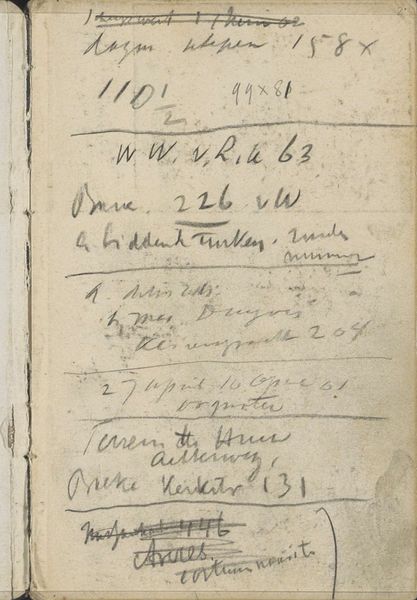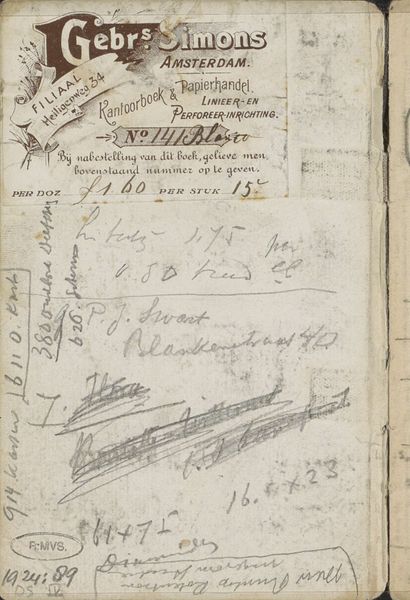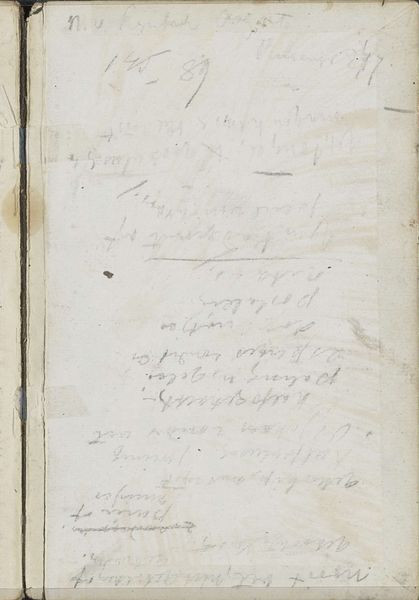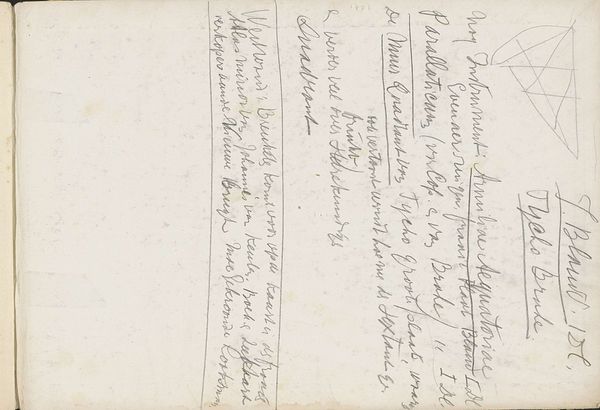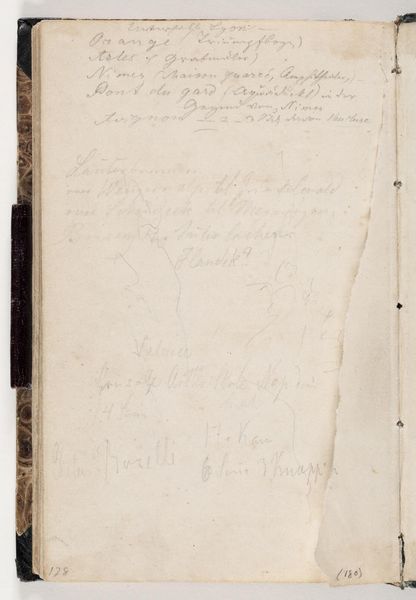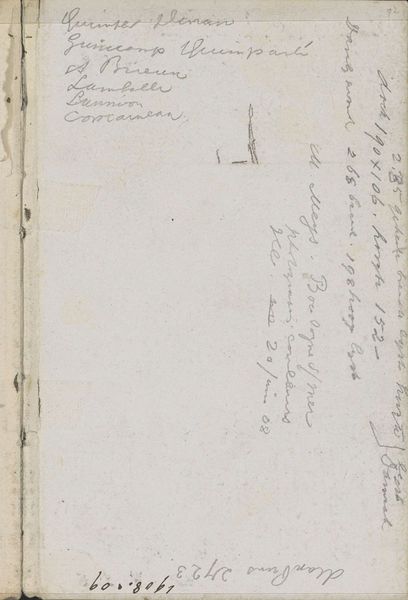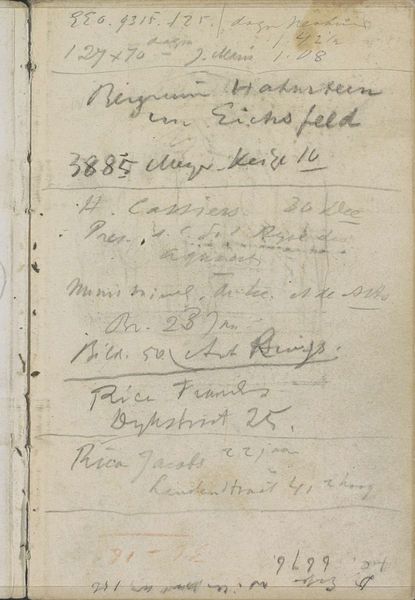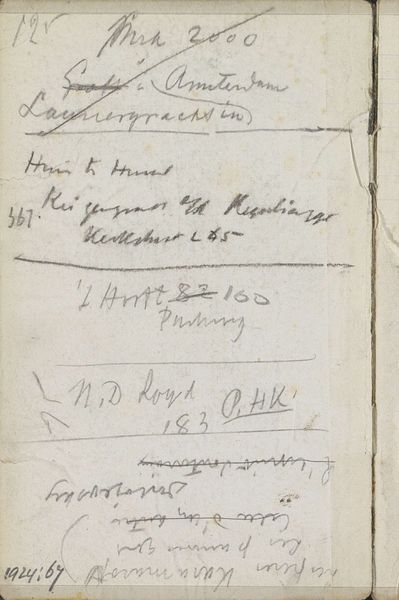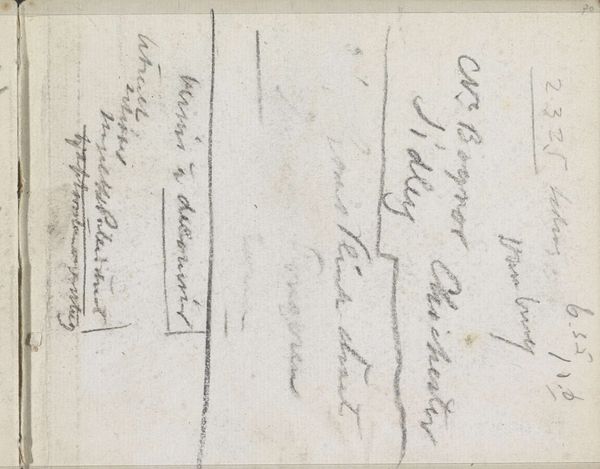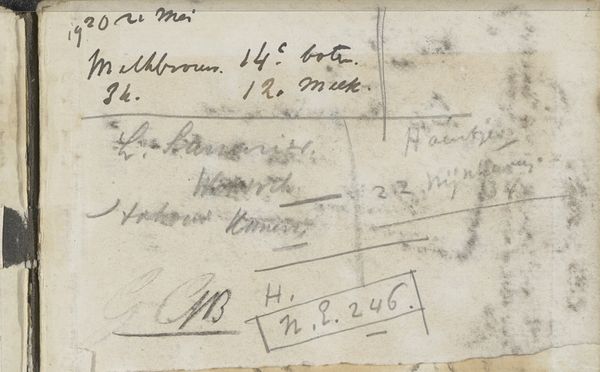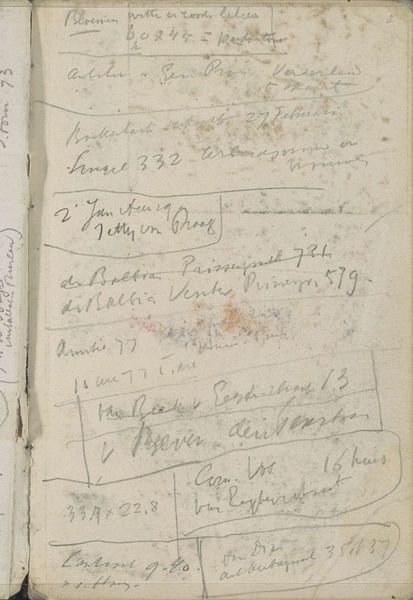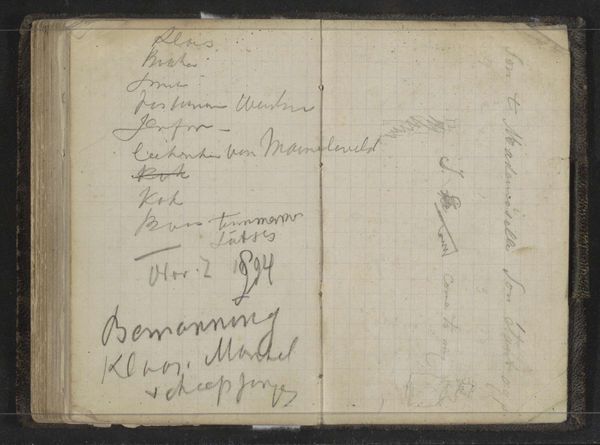
Copyright: Rijks Museum: Open Domain
Curator: "Annotaties," circa 1890-1900, by George Hendrik Breitner. It's ink and pencil on paper, currently at the Rijksmuseum. My first impression is the materiality of the aged paper; the ink drawings really show their process. What strikes you about this piece? Editor: It's interesting seeing what looks like a page from Breitner's sketchbook, especially with all the handwriting and addresses. It feels very personal and immediate, yet distant in time because of the paper. How do you interpret this work? Curator: Looking at the medium—ink and pencil—we see readily available, relatively inexpensive materials. This suggests a democratized mode of art production. Breitner isn’t reliant on costly pigments or elaborate studio setups here; he is using the tools of everyday life. It points to art being integrated into, and born from, daily experience. Notice, too, the immediacy of the mark-making; it underscores the labor involved, Breitner’s physical interaction with the material. How does that strike you? Editor: That makes a lot of sense. Thinking about it, the sketchbook itself is a commodity, mass-produced and available, emphasizing art-making as a process of readily accessible materials, not necessarily high art. The "annotations" themselves look like street addresses, notes; raw information. Curator: Exactly! The annotations, rather than being polished artistic statements, seem functional. This tension between artistic intention and mundane utility collapses traditional art hierarchies. Could this reveal insights into his social circle or the locations he frequented and depicted in his better known paintings? The materials, in their commonness, become the key to understanding Breitner's world. Editor: It is intriguing how focusing on the materiality gives it this new layer of significance, seeing the sketch less as a beautiful object and more as a document embedded in a very specific time, place, and economy of art production. Curator: Precisely! Looking closely at these aspects brings a richer, socially grounded appreciation to Breitner's practice.
Comments
No comments
Be the first to comment and join the conversation on the ultimate creative platform.
